Intrusion Detection Market 2022
A sensor fusion system might detect simultaneous fence vibration AND camera movement, yet still be able to recognize a false alarm
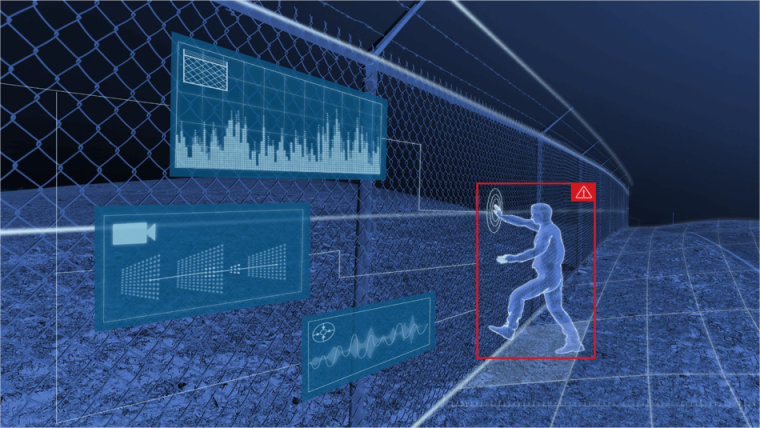
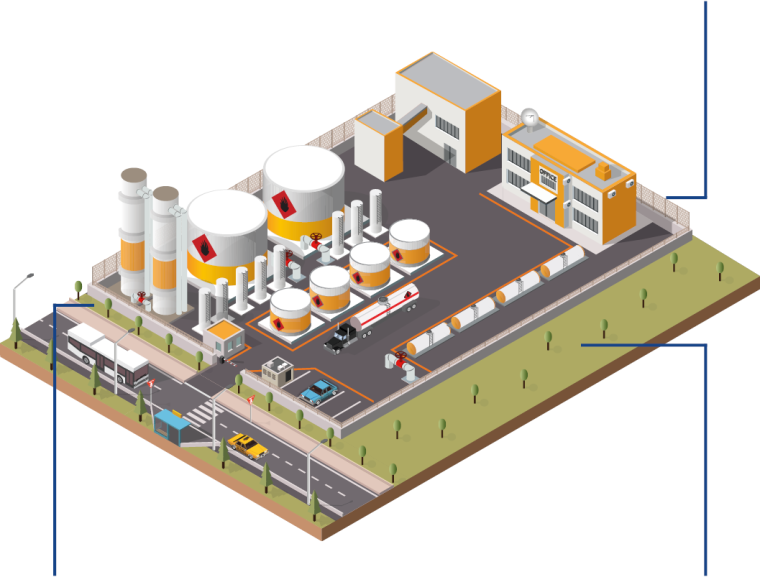

In this article GIT SECURITY takes a look at Artificial Intelligence in intrusion detection technology, takes a look at radars, gives an overview of products, and looks at an installation example of video security.
Artificial Intelligence for Intrusion Detection?
A Close-up on Sensor Fusion by Senstar
Sensor fusion is still a relatively new technology in perimeter security circles. With this newness often comes misunderstanding. Sensor fusion is the process of combining simultaneous inputs from different types of sensors to extract meaningful signals using machine learning techniques to derive intelligent results from potentially unclear inputs. It analyzes data streams from security cameras, fence sensors, volumetric sensors, and other inputs to identify events like intrusion attempts or even maintenance needs.
Sensor fusion systems cannot extract subtle features from the constant stream of sensor data they process unless they’ve been first trained. Training involves collecting large amounts of data to systematically fine-tune the algorithms. Even more importantly, it learns what sorts of patterns don’t merit attention, even when those patterns might fool simpler systems. A sensor fusion system might detect simultaneous fence vibration AND camera movement, yet still be able to recognize a false alarm triggered by the wind and nearby, non-threat, human activity. Or conversely, produce an intrusion alarm with high confidence even when a skilled intruder is employing a method to defeat a specific sensor. The sensor fusion system can also be fed with historical information about the site and the outcome of alarms, allowing it to learn as it goes and improve its ability to correctly sense security issues.
Perimeter Intrusion Detection Systems (PIDS) with AI
Another system that can be used with AI technology comes from Bandweaver. They use AI technology or detection algorithms to develop an acoustic fingerprint of different events. This enables the distinction between genuine security risks and extraneous environmental noise. Advanced signal processing technology combined with intelligent algorithms enables fast and accurate identification of the specific location of a potential threat to within ±5m.
They utilise their Perimeter Intrusion Detection Systems (PIDS) to ensure that organisations are fully secure and to help reduce operational risk. The fiber optic intrusion detection solutions provide both covert buried and fence or wall mounted detection capabilities from a single detection unit. With fully scalable systems for sites less than 5 km to more than 100 km, all PIDS detection units are offered in a 1 or 2-channel variant. The 2-channel variant will continue to provide uninterrupted detection along the perimeter. This remains true even if the cable is cut or damaged.
But not only securing fences and larger grounds is important, another reason to deploy an intrusion detection system or a security system is to protect valuable assets. Taking a closer look at what video security can do in supporting an intrusion detection system, we have been looking at an application story.
Automotive Repair Franchise deploys Security System
Business success drove the Australia-based mechanical repair specialist Florida Automotive to a large new facility. With expensive equipment and client assets on-site 24 hours per day, and the new workshop positioned in a quiet industrial area, the automotive repairer put a new, state-of-the-art security system in place. For the installation, they chose an innovative solution from Hikvision. Working with the installer and Hikvision representative, Florida Automotive deployed a converged solution built around Hikvision cameras, NVR, indoor stations, and centralized management software.
The Intercom Door Station was deployed at the main gate, capturing a wide field of view as individuals and vehicles approach. It also provides remote control to the main gate of the repair shop for afterhours access. A two-way audio is set up at the front gate as well, allowing for easy communication between the reception or manager’s office, and whoever happens to be at the gate. A KH8 Series Indoor Station was deployed in the reception area to control access to the main gate.
Additionally, two control points for the security system were created, one at the reception area, which combines with the front gate system for easy and convenient operation, and another in the manager’s office, which includes four 50-inch monitors for full and clear observation and monitoring.
“We are very happy with our system design and infrastructure, especially the fact that we are able to check and control the system remotely. This means that we are able to avoid most of the false alarms by checking the live view and activating it from wherever we happen to be,” said Florida Automotive’s Nilanga Lakshan Kirulapana.
“It’s quite a relief that such a large area containing expensive customer vehicles is adequately safeguarded, and we are fully compliant with security regulations and insurance guidelines.”
The Value of Radar
Moving forward to another perspective, radar technology opens a whole other dimension of intrusion detection.
For many years, the question of which sensor technology fits best for an application was easy to answer. When searching for a cheap and uncomplicated motion sensor, PIR was the choice. For commercial intrusion detection and alarm systems the integrators often had only a low budget. So they accept the possible troubles of PIR in outdoor applications. Radar was only used for more sophisticated functions. But now radar sensors are tackling the low-cost segment. They became smaller and cheaper, but also offer more features. This development could disrupt the market of motion detection. Especially for intruder detection, radar convinces with additional functionality which make the application more efficient and reliable.
Radar Motion Detection for Intrusion Alarm
Between modern radar sensors and PIR, only a small price gap is left. This persuades security technology companies to leave behind negative presumptions from the past and consider radar detection for their alarm system.
So what can they expect from new radar devices? The sensors working under difficult environmental conditions like dust, dirt, rain, snow, heat or cold. It is possible to notice the presence and the movement of vehicles, animals or people. The determination of moving speed and direction and also the distance optimizes the detection efficiency. It allows to make individual adaptions to the use case scenario. This reduces false alarms and improves the performance of the security system.
Intrusion systems based on radar technology only record security-related events (and not curious neighbors or roaming animals). For example it is possible to sort out irrelevant events like passing cars. With configuration of the sensitivity small animals like cats can be filtered out, so they won’t trigger an alarm.
See below a product collection of Intrusion Detection Products

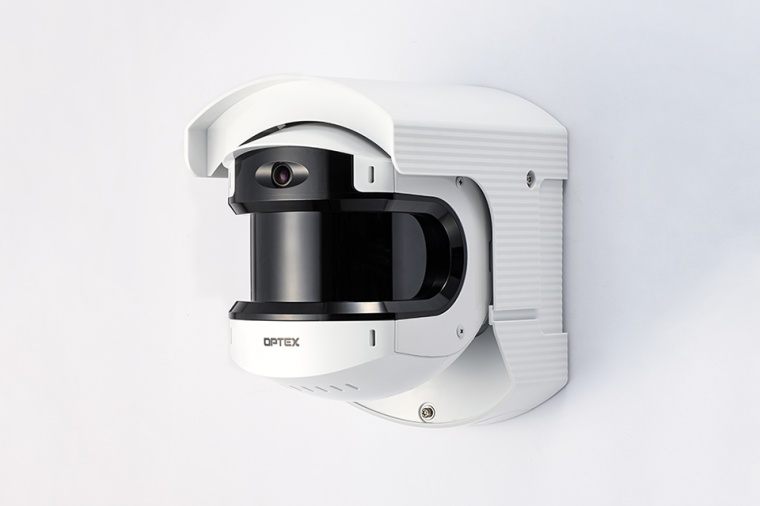
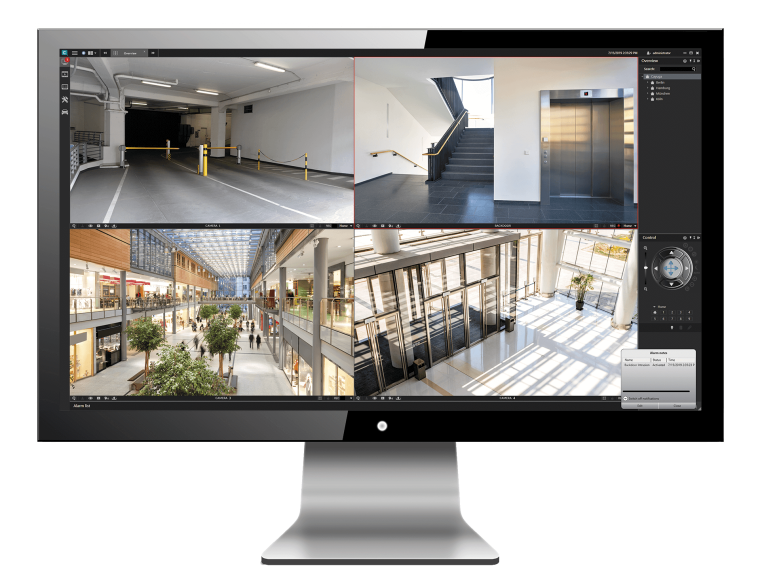
360 Perimeter Solutions: VibraTek – Vibration-sensitive Sensor
Vibration sensing technology applied to fence structures constitutes by far the most widely used and cost-effective method of intrusion detection. When used on the barriers or fences of secure site perimeters, the VibraTek Plus vibration-sensitive linear sensor provides intruder detection. One of the key differences VibraTek Plus has to other linear magnetic sensors is the mechanical damping that is incorporated. This design eliminates responses that happen with similar sensors which are undamped. The electrical signal that the sensor creates is a precise representation of the mechanical energy that created this signal. The signal analyser module to which the sensor is connected is able to accurately distinguish which type of signals they are, for example intrusion type hostile signals, or non-hostile such as those created by the environment, e.g. rain, wind etc. The resistance built in the design of the sensor ensures its performance is not affected by the access of any water caused by cable sheath damage or badly sealed joints. The sensor is set up as a pair of twisted conductors. With respect to the ground, these are balanced which ensures any externally generated electromagnetic interference sources are rejected.
Optex: Redscan Pro Series Firmware Update
Optex has launched a new firmware update for its Redscan Pro Lidar Series, featuring enhanced sensor functionality. The Onvif-compliant Redscan Pro series – which includes two models, the RLS-3060V with a range up to 30x60m and the RLS-50100V up to 50x100m – provides highly accurate detection outdoor and indoor, without any ‘gaps’ or the detection reliability ‘fading’ with range. The upgraded firmware features dynamic event filtering, which allows for alerts to be configured to meet specific detection criteria or logic. Alarms can be raised based on the sequence of zone detection, such as a target entering a specific zone first then a second one. It allows to filter events and focus on what really matters to the security team. In another scenario, for instance in a logistics or warehouse environment, an intelligent logic can be created based on the height of vehicles positioned by the loading bays. Delivery lorries or trucks entering the detection zones would not trigger any alarms, but smaller vehicles such as vans or cars would trigger the system. A series of new modes have been added to the Redscan Pro panoramic assistance camera module. To help adapt to further applications and to varying privacy restrictions, the camera can be set in image mode, mosaic mode, which pixelates the image to make persons non-identifiable, and all black mode, to render a black screen for both viewing and recording footage.
Sorhea: Solaris – Autonomous Active Infrared Barrier
The Solaris is an active infrared barrier consisting of a network of columns that create an immaterial and invisible wall of detection around the site to be protected. The columns communicate an alarm when an intruder cuts the infrared beams as well as filtering any unwanted alarms. Traditionally, IR barriers need cables for power and to send alarm information. The Solaris is an 100% autonomous infrared barrier that is powered by a solar panel and built-in battery. The alarms are communicated via an encrypted mesh radio network to the Maxibus hub that in turn relays the alarm information to third party systems. The Solaris is designed to equip existing sites where there is a real practical or economic interest in removing the civil works.
Qognify: Cayuga R17 – Real-time incident handling
Qognify has launched the latest version of its renowned Cayuga video management system (VMS). Cayuga R17 provides control rooms with powerful new person tracking, masking and camera forwarding capabilities to improve real-time incident handling and post-incident investigation. It enables operators to easily follow persons of interest, either in a real-time monitoring situation or as part of a post-incident investigation, across every camera connected to the VMS. The operator simply activates Click2Track and clicks on the appropriate highlighted area (depending on the direction of travel) displayed on the screen. They are then automatically presented with the next camera feed, the moment the subject is in its field of view, ensuring the subject is always kept under close observation.

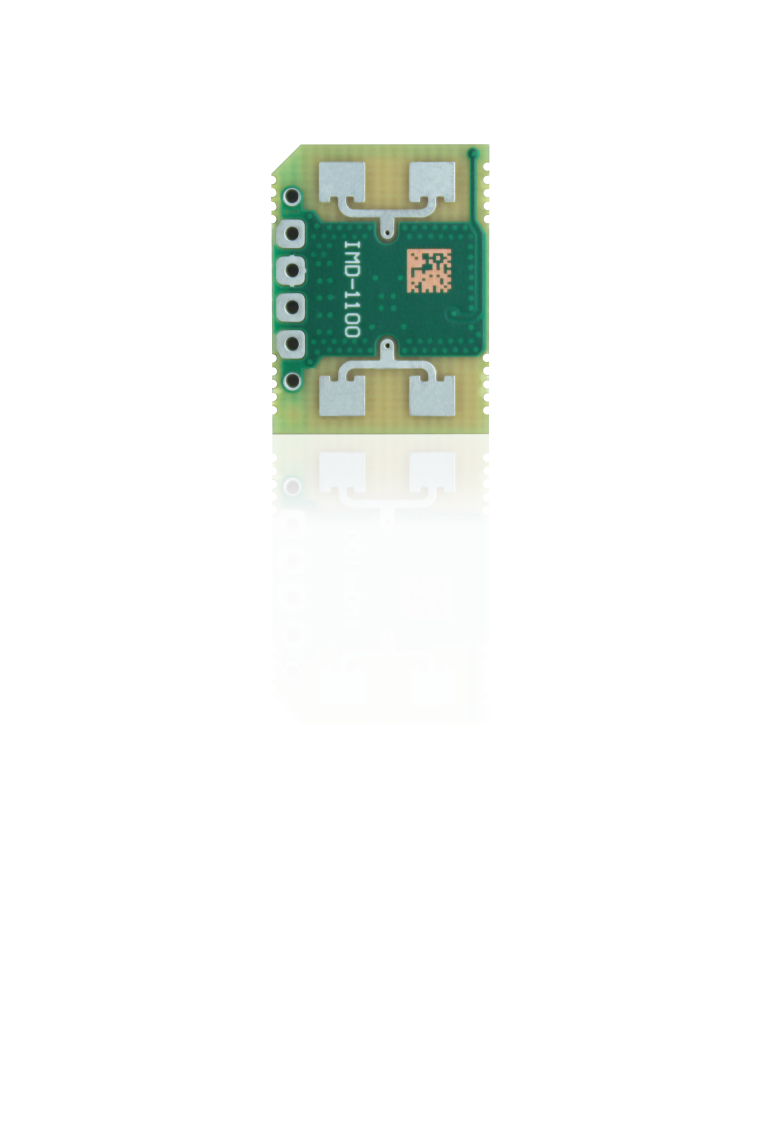
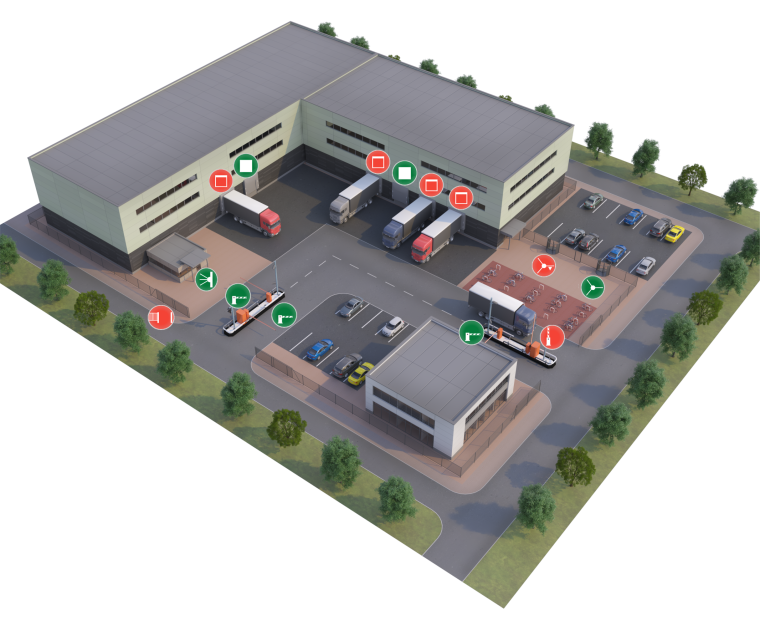
Innosent: IMD-1100 – Radar
Innosent has been developing sensors for motion detection since it was founded in 1999. One of the newest solutions is the IMD-1100 radar front end. This sensor is the smallest 24 GHz radar available in their portfolio, maybe even the smallest of its kind. The size is a game changer for many applications. It is so tiny, that it can be placed even behind a light switch, in a window frame, a wall or a doorbell without being noticed by intruders. The efficient radar technology will not miss any intruders around the building.
Ksenia Security: matrix – Universal Transmitter
Matrix is a bidirectional universal radio interface connecting low-power third-party motion detectors with the IoT control panel lares 4.0. It is designed to convert any motion detector into wireless systems thanks to the two dedicated inputs detecting the sensor’s sabotages and/or alarms. matrix can be equipped with 3 batteries to power the connected device, providing up to 4500 mAh autonomy. Its interface is fully compatible with BXS, VXS, WXI, WXS and QXI Optex motion detectors, and it communicates with them wirelessly through radio signals
Perinet: MultiSense – Perimeter Intrusion Detection, Monitoring and Control
MultiSense is a holistic solution for perimeter intrusion detection, monitoring and control. The basis of the MultiSense system is an encrypted network (PeriNet) which was specifically developed for the application in outdoor areas. In terms of intrusion detection, different types communicate via the PeriNet network with the centralised server where the decision making takes place. In addition, the PeriNet network interconnects all accesses such as gates, barriers or turnstiles. The browser-based software visualizes the perimeter, informs about intrusions or escapes and offers the possibility to control all accesses intuitively via a digital control panel.
Business Partner
Senstar Corp.119 John Cavanaugh Drive
K0A 1LO Carp
Canada
most read

Is Your Venue Ready for Martyn’s Law?
Martyn’s Law demands stronger security by 2027. Is your venue prepared to protect and respond?

Security management, building security & perimeter protection: the winners of category E at the GIT SECURITY AWARD 2026
GIT SECURITY AWARD 2026: Security management, building security & perimeter protection - an overview of the most innovative solutions


The Benefits of AI-based Video Surveillance Solutions for Sports Venues
Dallmeier Interview: Artificial intelligence Makes Stadiums Smarter

Intersec Saudi Arabia 2025 Concludes With Record Exhibitor Participation and Strong Industry Engagement
The seventh edition of Intersec Saudi Arabia showcased 434 exhibitors from 40 countries and welcomed 23,894 attendees







